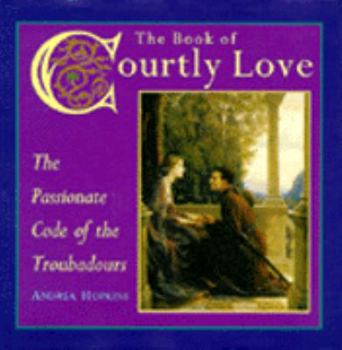The Book of Courtly Love: The Passionate Code of the Troubadours
For lovers--and lovers of romance--this lush treasury of French medieval lore illuminates the timeless stages of that most human experience--falling in love. More than 60 gorgeous, jewel-like... This description may be from another edition of this product.
Format:Hardcover
Language:English
ISBN:0062511157
ISBN13:9780062511157
Release Date:January 1994
Publisher:HarperOne
Length:128 Pages
Weight:0.86 lbs.
Dimensions:0.6" x 7.0" x 6.9"
Customer Reviews
2 ratings
The origins of modern romantic love
Published by Thriftbooks.com User , 17 years ago
One of the most amazing things about medieval culture in Europe was the rise of what we would call today romance. Oh I'm certain that before the Crusades there must have been romantic love, but from what I've read, there doesn't seem to really be a lot of literature or poetry that was written around the idea of a noble, suffering, love that didn't involve the pangs of sexual lust somewhere in there. Once the sexual desire had been satisfied and peaked, usually a couple parted ways and found someone else. Certainly marriage did not have any of the illusions of love tacked onto it. Marriage was a business arrangement, designed to bring two great families together, or to combine wealth, or to create an alliance. Love was something reckless, and a bit foolish, and certainly nothing to base a long term relationship on. Indeed -- most philosophers regarded romantic love as an illness, and suggested that love of that intensity be saved for God. But something happened when those knights who had gone on Crusade in the eleventh century returned to France. Suddenly, there was poetry being written about the joys of love between men and women. It was quietly, passionately erotic, placing the figure of a well-born, noble lady on a pedestal for a knight to adore with actions and words. For a culture that had viewed women as little more than broodstock for the next generation and a satisfier of physical lust, it was quite a change. Clearly there had been a shift, but what and who and how had made it happen? In this slim little introduction to the idea of Courtly Love, Andrea Hopkins uses poetry and art to give a glimpse of this change. The book opens with the thirty-one maxims compiled by Andreas the Chaplain, giving some views on love -- that a person can not love two people at the same time, that love is either increasing or decreasing all the time, that it is not honorable to love someone that you would be ashamed to marry, that jealousy is a vital component of love, that excessive lust does not always mean love, and so forth. After this, Hopkins shows the progress of the love affair, between the meeting of the fated pair all the way through to the usual sad or happy ending. It's a standard, almost predictable, journey -- the lovers meet, notice an immediate attraction, obstacles and self-doubt for the lovers, lovers that go mad or die because of their love, and finally, lovers that manage to be together not just in death but in life. Hopkins sums up the book with how romantic love has survived the middle ages and renaissance to what we now consider to be true love -- love that is deeply romantic, free of complications and perhaps not quite grounded in reality. To illustrate these aspects, Hopkins uses the tales that are most familiar to modern readers -- Tristan and Isolde, Guenevere and Lancelot, and the lesser known tales of Aucaussin and Nicolette and Troilus and Cresyide. She draws on manuscript illuminations, poetry and on the written stories abo
Highly recommended
Published by Thriftbooks.com User , 22 years ago
This small book, is an excellent look at the courtly love of twelfth century France. The book looks at the phenomenon of courtly love, what it taught, and how it happened. Along the way, the reader is treated to many beautifully reproduced pictures. I loved reading this book, and highly recommend it to you.






